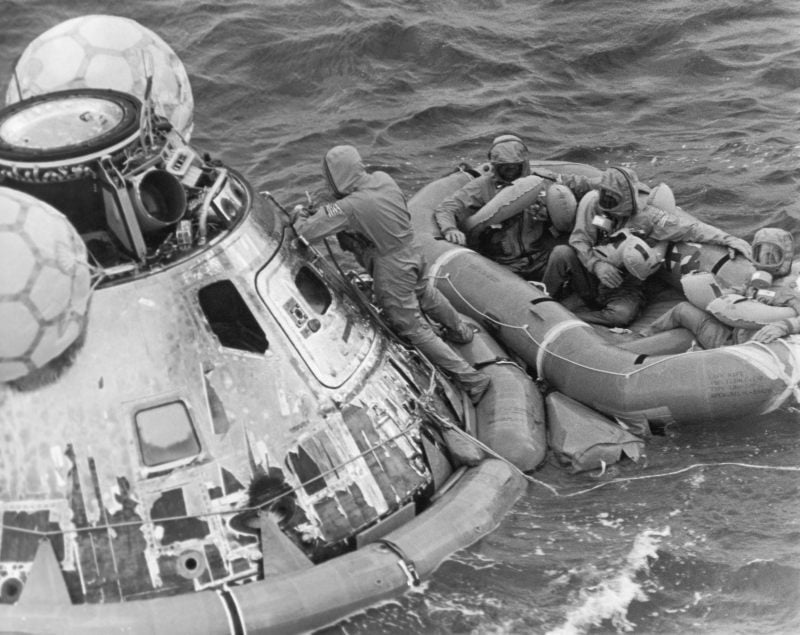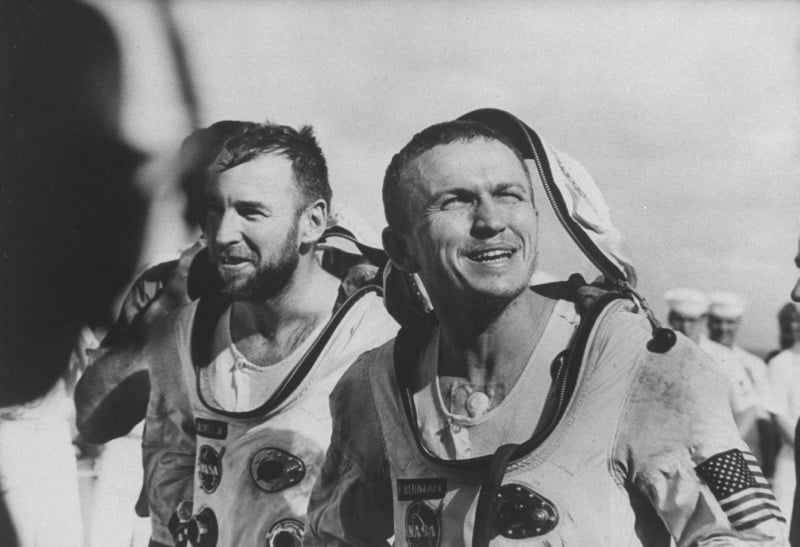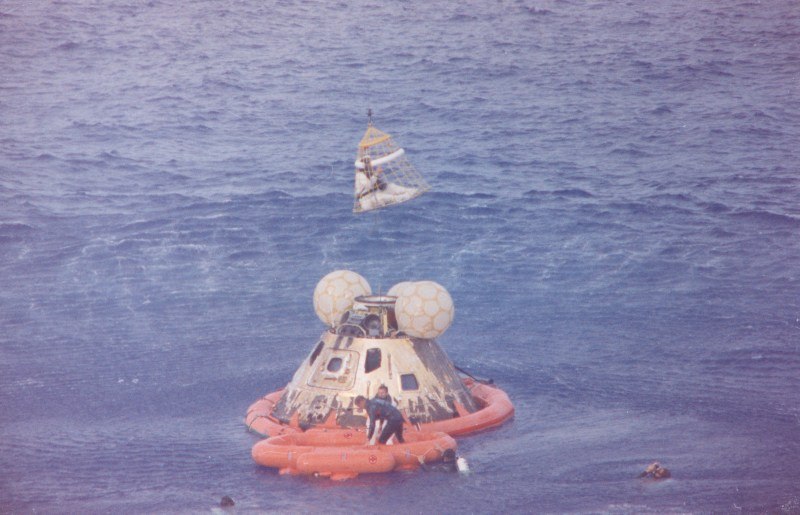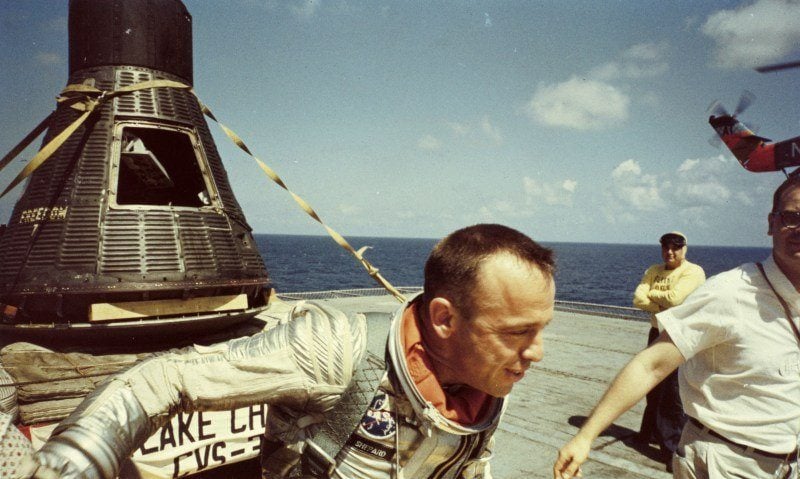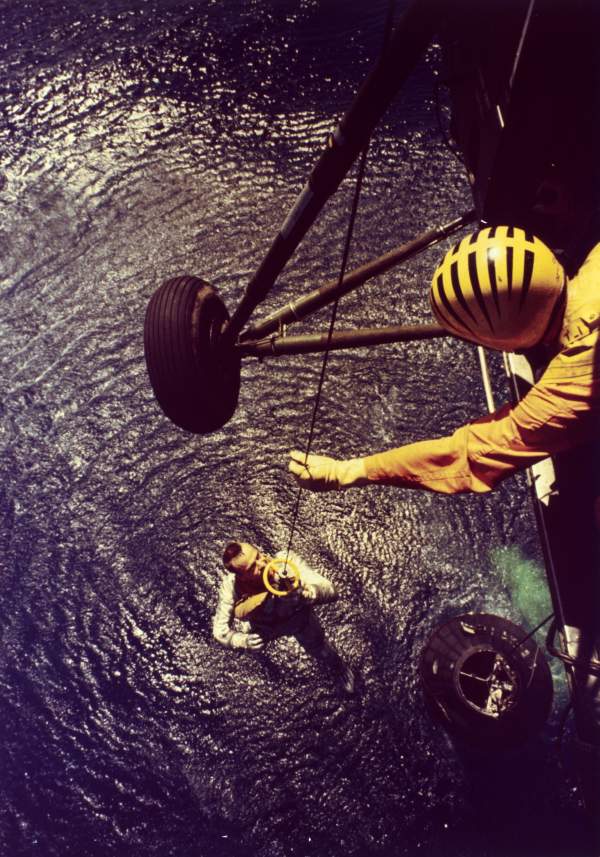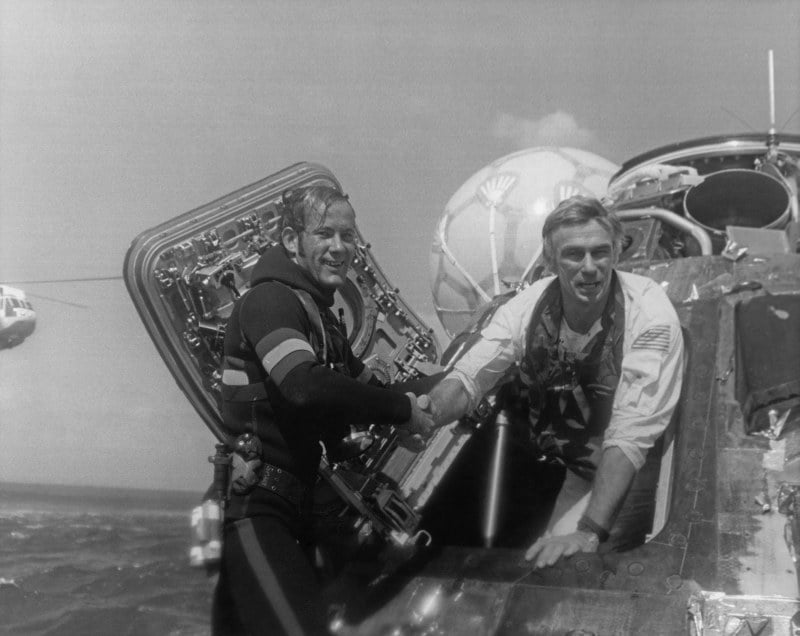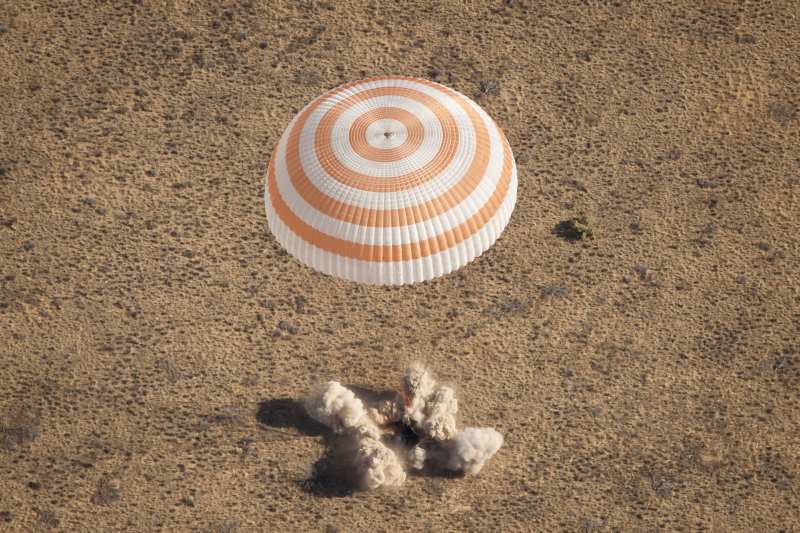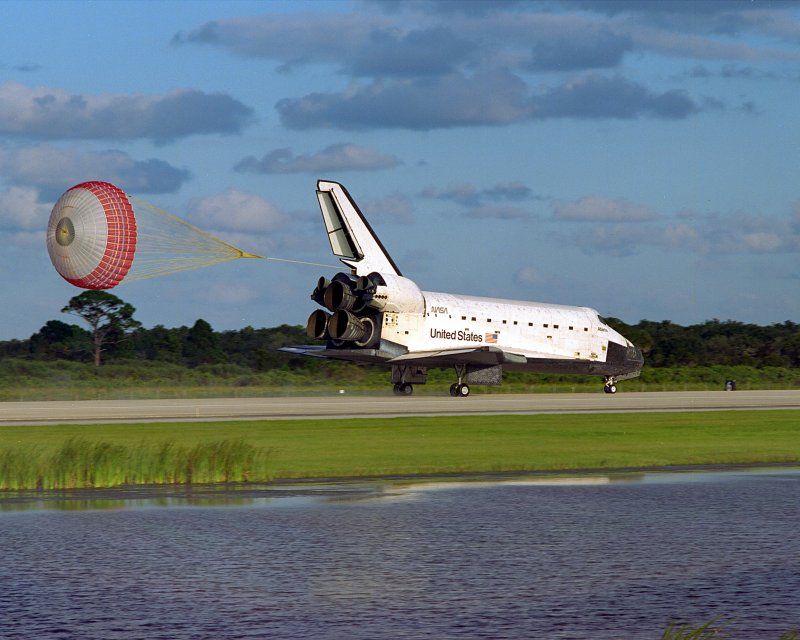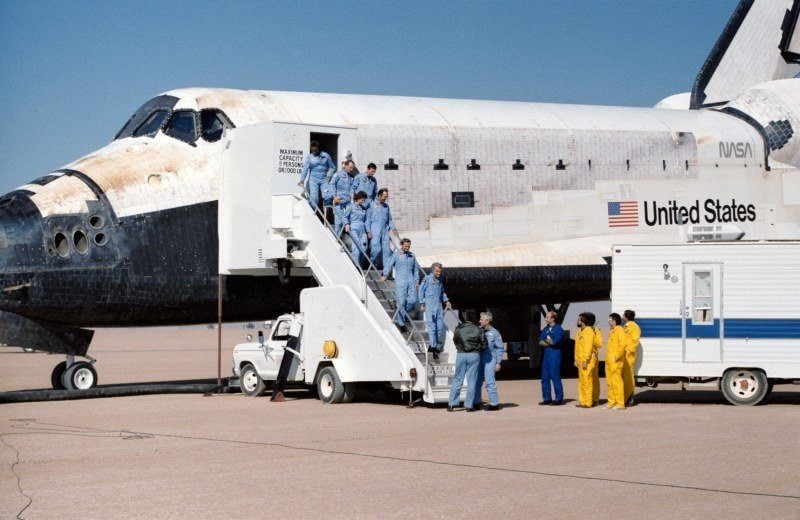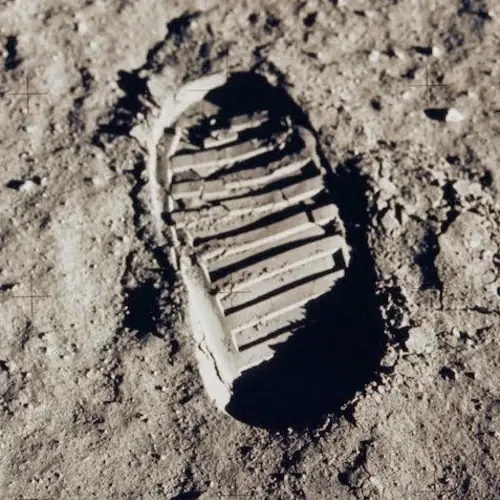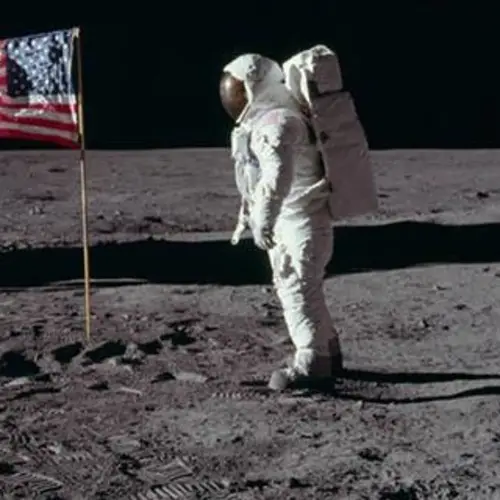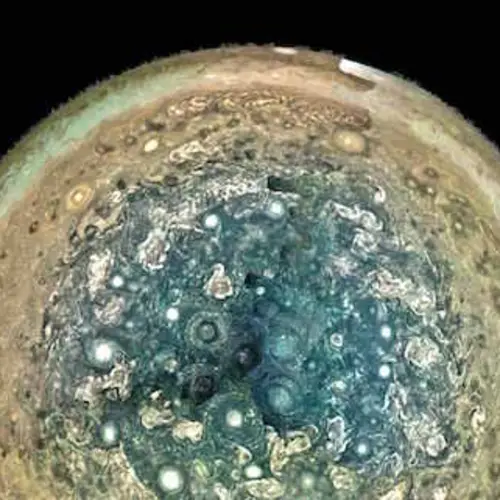The launches may get more press, but the engineering prowess required to pull off safe NASA landings is a thing of beauty. And so are the decades worth of photographs documenting the joyous return of the brave men and women who'd just went exploring beyond the ether.
The landing of the first shuttle in 1981 — the STS-1, the world's first reusable space vehicle — drew a crowd of 200,000-plus to Edwards Air Force Base in California and ushered in a new era of spaceflight.
Prior missions required that space capsules return to Earth with a so-called "splashdown" water landing, meaning that the Navy had to be on standby to recover the astronauts.
The risks of a splashdown are many, from a blown hatch door leading to a near-drowning, to the capsule missing its mark entirely, landing hundreds of miles away — both of which have actually happened to NASA astronauts.
Remarkably, however, the more primitive, parachute-aided splashdown landings have never caused fatalities. The only reentry-related astronaut deaths came in 2003, when the space shuttle Columbia's thermal protection system failed and the craft disintegrated in the atmosphere, killing all seven on board.
Columbia was a haunting reminder of the 1986 Challenger disaster, as well as the famous near-disaster of Apollo 13 — both additional reminders of why the men and women in the photographs above look so fortunate to have ventured into space and made it safely home to their loved ones.
The gallery above features a mix of the splashdown landings from the early days of spaceflight with the far more familiar runway landings of the space shuttle.
Also included above are more recent photos of a Soyuz capsule from the International Space Station gliding safely to rest on the Kazakhstan steppe, aided by rocket brakes so precise that they engage at literally the last second, bringing both the mechanical marvel and the real-life superheroes inside home safely.
Love exploring NASA? Check out dozens of photos from the agency's glory days. Still feeling adventurous? How about Hubble telescope photos from the farthest reaches of space.
